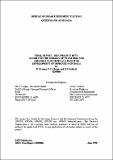| Author | Logan, DP |
| Author | Allsopp, PG |
| Author | Zalucki, MP |
| Date Accessioned | 2012-11-13 |
| Date Available | 2012-11-13 |
| Issued | 1998 |
| Identifier | http://hdl.handle.net/11079/853 |
| Abstract | The biology of the two most important species of canegrubs affecting sugarcane in southern Queensland. Childers canegrub (Antirogus parvulus Britton) and negatoria canegrub (Lepidiota negatoria Blackburn) was studied during a 5-year period. Rearing methods were developed and the phenology of each species was determined. Data were collected on development, mortality and reproduction in laboratory and field trials; these data were summarised as a computer model for each species. Various management scenarios were simulated using the computer models. Short crop-length (3-4 years) and consistent application of control measures (insecticide and plough-out) could drive populations of canegrubs to extinction after 5-8 generations. Further field data are needed to validate many of the results of the model. |
| Language | en |
| Publisher | BSES |
| Part of Series | BSES Internal Report; 1998 No 913 Report SD98006; BSS077 |
| Subject | Negatoria |
| Subject | Childers Canegrubs |
| Subject | Antirogus parvulus britton |
| Subject | Lepidiota Negatoria Blackburn |
| Subject | Sugarcane |
| Subject | Pest control |
| Title | Studies on the biology of negatoria and childers Canegrubs as a basis for development of improved controls : SRDC final report BS77S |

